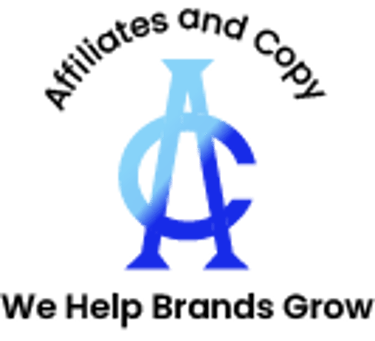Understanding and Utilizing Customer Journey Mapping for Affiliate Sales
Affiliate marketing isn't just about throwing links into content and hoping for clicks. By understanding and utilizing customer journey mapping for affiliate sales, you can nurture leads, gain trust, and convert at a much higher rate.
Jatoori Jaturi
7/18/20253 min read


Understanding and Utilizing Customer Journey Mapping for Affiliate Sales:
Tailoring Content to Every Stage of the Buyer’s Journey
In the fast-evolving world of affiliate marketing, knowing what to say, when to say it, and who to say it to can make all the difference. One powerful strategy to boost conversions and build trust is customer journey mapping. By understanding where your audience is in their buying process, you can craft tailored content that nurtures them from interest to conversion — increasing both click-through rates and affiliate sales.
In this post, we'll break down how to use customer journey mapping for affiliate marketing and show you how to align your content with each phase of the buyer’s journey for maximum impact.
What Is Customer Journey Mapping?
Customer journey mapping is the process of visualizing every step a potential buyer takes before making a purchase. In affiliate marketing, this means understanding how users go from awareness to decision — and how your content can guide them.
The buyer’s journey typically consists of three main stages:
Awareness Stage – The customer realizes they have a problem or need.
Consideration Stage – They explore solutions and compare options.
Decision Stage – They’re ready to buy and looking for the best product or deal.
Understanding these stages allows you to match your affiliate content to your audience’s intent at each phase.
Tailoring Affiliate Content to Each Stage
🧠 1. Awareness Stage – Capture Attention & Educate
At this point, the customer is just beginning to realize they have a need. They’re not ready to buy yet — they’re researching and learning.
Best content types for this stage:
Blog posts: “10 Signs You Need a Better Email Marketing Tool”
Informational videos or listicles
Infographics and how-to guides
Affiliate strategy:
Softly introduce a category of products or tools that solve their problem — without pushing a sale.
Example:
A travel blogger might write: “Why Your Suitcase Is Holding You Back (And What to Do About It)” — then subtly mention modern carry-on options with affiliate links.
🔍 2. Consideration Stage – Compare Options & Build Trust
Here, the audience is actively exploring solutions. They're comparing different tools, services, or products.
Best content types for this stage:
Comparison articles: “Grammarly vs ProWritingAid: Which One Wins?”
Review videos and blog posts
Case studies or use-case articles
Product roundups: “Top 5 Budget Laptops for Creators in 2025”
Affiliate strategy:
Provide in-depth, honest insights. Use affiliate links naturally while offering value and clear comparisons.
Tip: Include pros and cons, real-world applications, and FAQs to establish trust.
🛒 3. Decision Stage – Convert with Confidence
Now the user is ready to make a purchase — they just need a final push.
Best content types for this stage:
Product demos or tutorials
Exclusive offers or discount posts
Email marketing sequences with time-sensitive promotions
“Best Deal” blog posts
Affiliate strategy:
Use clear CTAs (calls to action), urgency (limited-time bonuses), and transparent affiliate links to direct traffic to the merchant.
Example CTA:
“Grab the 20% discount on XYZ Tool here before the offer ends [affiliate link].”
Why This Strategy Works
✅ You align your content with the user's mindset
✅ You increase engagement and reduce bounce rates
✅ You build trust over time — crucial for affiliate marketing
✅ You improve your SEO by targeting specific search intent at each stage
How to Build a Customer Journey Map for Affiliate Marketing
Identify your target persona – Who is your ideal reader or viewer?
Define their pain points – What are they trying to solve?
Map content types to each stage of awareness
Track behavior using analytics (time on page, CTRs, scroll depth)
Adjust based on what’s converting and where users drop off
Tools to help: Google Analytics, Hotjar, SEMrush, Ahrefs, email marketing software.
Conclusion
Affiliate marketing isn't just about throwing links into content and hoping for clicks. By understanding the customer journey and creating stage-specific content, you can nurture leads, gain trust, and convert at a much higher rate.
Start mapping your audience’s journey today, and you’ll build not only a more strategic affiliate business — but a more sustainable one too.
FAQs
Q1: Is customer journey mapping only for large brands?
No, even solo bloggers and small affiliate marketers can benefit. Understanding your audience's journey is crucial regardless of size.
Q2: How do I know which stage my visitors are in?
Use tools like Google Analytics, page intent (e.g., blog vs. product review), and keyword research to identify buyer intent.
Q3: What if I have limited content — how do I cover all stages?
Start by identifying your top-performing content and expand strategically. Build supporting articles to cover each stage over time.
Q4: Can I use the same affiliate product in different stages?
Absolutely! Tailor the messaging: Inform in the awareness stage, compare in consideration, and push CTA in the decision stage.
Q5: Does this approach help with SEO?
Yes. By targeting intent-specific keywords at each stage, your site becomes more relevant and ranks higher in search results.
